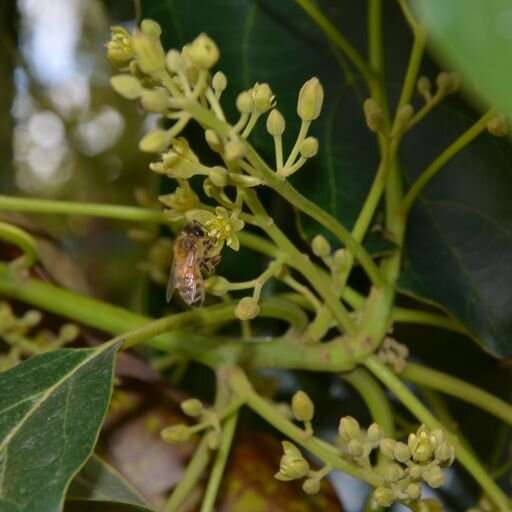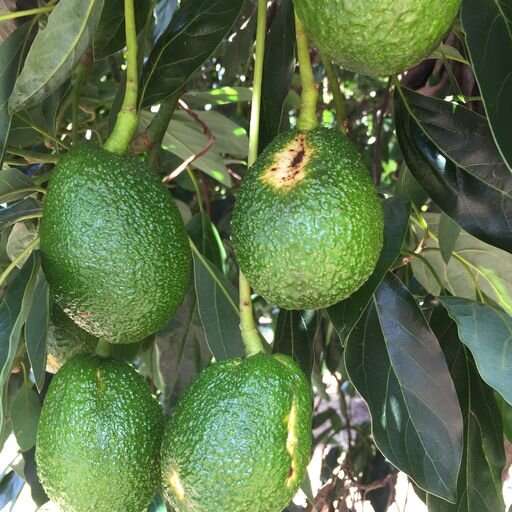
Researchers at The University of Queensland and CSIRO, Australia’s national science agency, have shown bees can help prove Australia’s valuable avocado crop is free of a pathogen that could be a barrier to exports. The findings are published in the journal Phytopathology.
Associate Professor Andrew Geering from the Queensland Alliance for Agriculture and Food Innovation (QAAFI) said monitoring for avocado sunblotch is important to protect lucrative overseas markets.
“We’ve had an active control plan for avocado sunblotch since the 1980s because it has the potential to decrease yield of a tree by about 80%,” Dr. Geering said.
“Even though this pathogen has nearly been eradicated, there is a chance there are still pockets of infection around the place, and this is a concern for Australia’s trading partners.
“Because the viroid is seed-transmitted at a very high rate, a child in New Zealand using an infected avocado seed for a school project could introduce sunblotch to their country.”
CSIRO scientist Dr. John Roberts has worked on bee health and biosecurity for more than a decade and developed the concept after detecting many plant viruses alongside bee viruses in pollination hives.
The research team sought a simple way to check for avocado sunblotch in Australian orchards without having to individually test every tree, and found bees were the answer.
“Avocado trees are 10 meters tall by 5 meters wide and there might be 20,000 in an orchard, and we needed a way to efficiently gather samples,” Dr. Geering said.

“Bees are brought in to pollinate the trees as a normal farming practice to improve yields.
“They take the pollen back to a central location, their hive, so effectively they’ve done the sampling work for us and all we have to do is test the pollen.
“It’s much better than a team of people climbing up ladders or riding cherry pickers to collect leaves.
“Bees are reliable, free and very thorough in their sampling activity.”
Dr. Geering plans to implement the bee surveillance more broadly.
“Now that we’ve demonstrated the principle, we’d like to roll it out in the largest avocado producing area in Australia, the Atherton Tableland, to demonstrate that it’s free of the pathogen,” he said.
Dr. Roberts said there was great potential for bees to be recruited for surveillance tasks with approximately 530,000 commercially managed hives delivering paid pollination services around Australia for 65% of our horticultural and agricultural crops.
“For avocado sunblotch we can use them for annual monitoring during pollination across wide areas,” Dr. Roberts said.
“This approach can also provide surveillance for multiple pathogens simultaneously of both honeybees and plants, making this a powerful cross-industry biosecurity tool.”
More information:John M. K. Roberts et al, Surveillance for Avocado Sunblotch Viroid Utilizing the European Honey Bee (Apis mellifera), Phytopathology (2022). DOI: 10.1094/PHYTO-08-22-0295-R
Citation:Bees can help prove avocado crops are free of a pathogen that could be a barrier to Australia’s exports (2023, March 30)retrieved 8 April 2023from https://phys.org/news/2023-03-bees-avocado-crops-free-pathogen.html
This document is subject to copyright. Apart from any fair dealing for the purpose of private study or research, no part may be reproduced without the written permission. The content is provided for information purposes only.
Note: This article have been indexed to our site. We do not claim legitimacy, ownership or copyright of any of the content above. To see the article at original source Click Here












